#PrediabetesAwareness
Explore tagged Tumblr posts
Text
Stopping the Rise of Diabetes in Kids | Episode 1| The Art of Recovery With Dr. Rob Letizia
youtube
In this episode of Art of Recovery, Dr. Rob Letizia dives into the alarming rise in pre-diabetes and type 2 diabetes among children and teens—a trend that surged 182% during the pandemic. Backed by data from the CDC, Children’s National Hospital, and Wake Forest University, Dr. Rob explores how ultra-processed foods, sedentary lifestyles, and screen time are fueling this crisis. He shares heartfelt insights as a father and healthcare professional, offering practical tips to help families build healthier habits together. Don’t miss this vital conversation on protecting your child’s future health—starting with simple changes at home.
#kidshealthtips#childhooddiabetes#prediabetesawareness#healthykids#nutritionforkids#diabetesprevention#pediatrichealth#familyhealth#screenfreekids#ultraprocessedfoods#type2diabetes#parentingtips#healthylifestyle#directaccesspt#physicaltherapyforkids#spectrumtherapynj#drrobletizia#artofrecovery#waynenjhealthcare#Youtube
0 notes
Text
How to Manage Diabetes and Lower Blood Sugar: Effective Strategies for Optimal Health
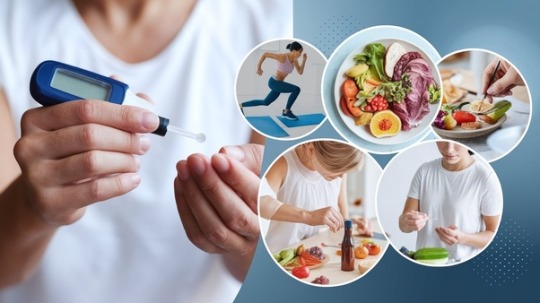
Introduction Diabetes, whether prediabetes or type 2, affects millions globally, with blood sugar management being a cornerstone of care. Normal fasting blood glucose levels range between 70 and 100 mg/dL, but tighter control (80 and 90 mg/dL) is ideal. Diabetes is diagnosed when fasting glucose exceeds 126 mg/dL, while post-meal spikes should stay below 140 mg/dL. However, these thresholds may still pose risks, underscoring the need for proactive strategies to reduce blood sugar and prevent complications. This guide offers actionable tips, food recommendations, exercise routines, and lifestyle adjustments to help you regain control.
Support healthy blood sugar levels, enhance energy, and promote well-being with Gluco Bliss, your wellness solution!
Understanding the Root Causes of High Blood Sugar
Hyperglycemia (high blood sugar) stems primarily from diet and insulin resistance.
1. Dietary Triggers
Carbohydrates: refined carbs (sugars, syrups, starches) rapidly convert to glucose. Sugars: Table sugar and high-fructose corn syrup spike blood sugar quickly.Fructose overloads the liver, promoting fatty liver and insulin resistance. Starches: Bread, rice, and potatoes break down into glucose faster than complex carbs.
Excess Protein: Surplus protein can convert to glucose (gluconeogenesis).
Fats indirectly affect glucose via glycerol, but minimally compared to carbs.
2. Insulin Resistance
Mechanism: Frequent carb-heavy diets overwhelm cells, making them resistant to insulin. This forces the pancreas to produce more insulin, worsening resistance over time.
Fructose’s Role: Unlike glucose, fructose is metabolized solely by the liver, driving fat accumulation and insulin dysfunction.
Proven Strategies to Lower Blood Sugar
1. Diet Overhaul
A. Reduce Harmful Carbs
Avoid refined sugars, syrups, and processed starches.
Limit grains, potatoes, and corn.
B. Choose Smart cars
Non-starchy vegetables: spinach, broccoli, and kale (high fiber, low glycemic impact).
Fiber-rich foods: chia seeds, flaxseeds, and oats slow sugar absorption.
Support healthy blood sugar levels, enhance energy, and promote well-being with Gluco Bliss, your wellness solution!
C. Insulin-Sensitizing Superfoods
Bitter melon (Karela): Contains charantin and polypeptide-P to boost insulin secretion. Use fresh juice or powder daily.
Jamun (Indian blackberry): Seeds and fruit contain jambosine, which blocks sugar conversion. Opt for seed powder off-season.
Neem-Karela Jamun Juice: Combines detoxifying and glucose-lowering properties. Drink twice daily.
Pumpkin: high in fiber and antioxidants.
Okra: Soak sliced okra overnight; consume the water to reduce glucose.
Apples: Eat with skin for fiber and polyphenols (avoid juice).
D. Meal Timing
Practice intermittent fasting (e.g., 16:8 method) to reduce insulin demand.
2. Exercise Routines
A. Gentle Movement
Walking: 30 minutes daily improves insulin sensitivity by pulling glucose into muscles.
Chair exercises: leg swings, seated marches, and torso twists for mobility-limited individuals.
B. Strength Training
Bodyweight workouts: Squats, lateral raises, and modified planks build muscle mass, enhancing glucose uptake.
C. Balance and Flexibility
Yoga or tai chi: improve circulation and reduce stress hormones like cortisol.
Avoid Overtraining: Intense workouts may spike cortisol, raising blood sugar. Opt for moderate, consistent activity.
3. Lifestyle Adjustments
A. Monitor Blood Biomarkers
Track fasting glucose and fasting insulin. Elevated insulin (>5 μIU/mL) signals early resistance.
Use a continuous glucose monitor (CGM) for real-time feedback.
B. Stress Management
Chronic stress raises cortisol. Try meditation, deep breathing, or nature therapy.
C. Sleep Quality
Aim for 7–8 hours nightly. Poor sleep disrupts insulin sensitivity.
D. Consistency is Key
Insulin resistance develops over years; reversal requires months of disciplined diet and exercise.
Sample Daily Routine for Blood Sugar Control
Morning: Drink neem-karela-jamun juice. 20-minute walk or yoga.
Meals:Breakfast: Chia pudding with berries.Lunch: Grilled chicken with roasted veggies.Snack: Apple with almond butter.Dinner: Salmon and sautéed spinach.
Evening: 10-minute resistance band workout.
Support healthy blood sugar levels, enhance energy, and promote well-being with Gluco Bliss, your wellness solution!
Conclusion Managing diabetes requires a holistic approach: cutting harmful carbs, prioritizing nutrient-dense foods, staying active, and monitoring biomarkers. Pairing bitter melon, jamun, and chia seeds with regular exercise can enhance insulin sensitivity, while fasting and stress reduction address root causes. Remember, consistency—not perfection—drives long-term success. Always consult a healthcare provider before making drastic changes, and use these strategies to reclaim your health.
#DiabetesManagement#BloodSugarControl#Type2Diabetes#PrediabetesAwareness#HealthyLiving#HolisticHealth#LowCarbDiet#DiabeticFriendlyFoods#HealthyEating#SugarFreeLife#FiberRichFoods#IntermittentFasting#BitterMelonBenefits#JamunForDiabetes#NaturalDiabetesRemedies#OkraWater#ChiaSeedsBenefits#SuperfoodsForHealth#ExerciseForDiabetes#GentleExercise#ChairWorkouts#YogaForDiabetes#StressManagement#SleepWellLiveWell
0 notes
Text
Mastering Endocrinology Medical Billing for Enhanced Practice Revenue
This Article Was Originally Published on Live Positively
Endocrinology, the branch of medicine dealing with the endocrine system, its diseases, and its specific secretions known as hormones, involves a complex array of diagnostic tests and treatments. Effective management of medical billing in endocrinology is crucial for the financial health of a practice. This article explores the intricacies of endocrinology medical billing, common challenges, and best practices for ensuring maximum reimbursement and revenue cycle efficiency.
The Complexity of Endocrinology Medical Billing
Endocrinology encompasses a wide range of services, including the management of conditions like diabetes, thyroid disorders, osteoporosis, and hormonal imbalances. Each of these conditions involves unique diagnostic procedures, treatments, and follow-ups, all of which need to be accurately documented and coded.
Diverse Diagnostic Tests and Treatments:
Endocrinologists frequently conduct tests such as blood glucose monitoring, thyroid function tests, and bone density scans. Each test and subsequent treatment requires precise documentation and coding to ensure proper billing and reimbursement.
Chronic Disease Management:
Many endocrine disorders, such as diabetes and thyroid diseases, require ongoing management. This includes regular check-ups, lab tests, and medication adjustments, all of which must be meticulously recorded and billed correctly.
Insurance and Compliance:
Navigating the myriad of insurance policies and ensuring compliance with regulations like HIPAA and ICD-10 coding standards is essential. Any lapse in compliance can result in claim denials or delays in payment.
Common Challenges in Endocrinology Medical Billing
Coding Errors:
Incorrect coding is a significant issue in endocrinology billing. With the complexity of endocrine disorders, each requiring specific ICD-10 codes and CPT codes, mistakes can easily occur, leading to claim denials or reduced reimbursements.
Documentation Issues:
Incomplete or inaccurate documentation can also lead to billing issues. Every patient encounter must be thoroughly documented, detailing the diagnosis, treatment plan, and follow-up care to support the billing codes used.
Insurance Verification:
Verifying patient insurance coverage before services are rendered is crucial. This ensures that the services provided are covered under the patient's insurance plan and reduces the likelihood of claim denials.
Regulatory Changes:
Keeping up with changes in healthcare regulations and insurance policies is a constant challenge. Practices must stay informed about updates to coding standards, billing regulations, and payer policies to avoid compliance issues.
Best Practices for Optimizing Endocrinology Medical Billing
Invest in Training and Education:
Continuous education for billing staff is vital. Ensure that your team is up-to-date with the latest coding guidelines, insurance policies, and regulatory requirements. Regular training sessions can significantly reduce coding errors and improve claim approval rates.
Implement Advanced Billing Software:
Utilize advanced medical billing software that includes features such as automated coding assistance, electronic claim submission, and real-time tracking of claim status. These tools can streamline the billing process, reduce errors, and speed up reimbursement.
Regular Audits and Compliance Checks:
Conduct regular audits of billing practices to identify and correct errors before they lead to claim denials. Compliance checks ensure adherence to all relevant regulations, minimizing the risk of audits and penalties.
Thorough Documentation Practices:
Implement standardized documentation practices to ensure that all necessary information is captured accurately. This supports correct coding and reduces the likelihood of claim denials due to incomplete documentation.
Effective Communication with Patients:
Educate patients about their insurance coverage, benefits, and financial responsibilities. Clear communication regarding billing processes and payment options can reduce the incidence of unpaid balances and billing disputes.
Leveraging Professional Endocrinology Medical Billing Services
Outsourcing medical billing to a specialized service provider can be a strategic move for endocrinology practices. Professional billing services bring expertise, advanced technology, and dedicated focus to optimize the billing process. Here's how professional billing services can benefit endocrinology practices:
Expertise in Endocrinology Billing:
Professional billing services have a team of certified coders and billing experts who specialize in endocrinology. Their deep understanding of endocrine-specific codes, procedures, and payer policies ensures accurate billing and maximizes reimbursements.
Advanced Technology:
Billing service providers use state-of-the-art technology to automate and streamline the billing process. Automation reduces errors, speeds up the billing cycle, and enhances efficiency.
Improved Claim Approval Rates:
With expertise and technology, billing service providers can significantly improve claim approval rates. They ensure that claims are accurately coded, thoroughly documented, and submitted correctly, reducing the chances of denials and delays.
Focus on Core Activities:
By outsourcing billing, endocrinology practices can focus on delivering high-quality patient care. The administrative burden of billing is shifted to the billing service provider, allowing healthcare providers to concentrate on what they do best.
Enhanced Revenue Cycle Management:
Professional billing services offer comprehensive revenue cycle management, from patient registration to final payment collection. Their systematic approach ensures efficient management of the entire billing cycle, optimizing revenue and improving cash flow.
Conclusion
Endocrinology medical billing is a complex and demanding process that requires expertise, accuracy, and continuous adaptation to regulatory changes. By adopting effective strategies and leveraging professional billing services, endocrinology practices can overlook the burden of medical billing. This not only enhances financial performance but also allows healthcare providers to focus on delivering exceptional patient care. Partnering with a specialized billing service provider can transform the billing process, ensuring accurate coding, timely claim submission, and maximized reimbursements.
#EminenceRCM#EndocrinologyBilling#MedicalBilling#PrediabetesCare#RCMSpecialists#HealthcareBilling#BillingExperts#CodingGuidelines#MedicalCoders#PrediabetesAwareness#DiabetesManagement#RevenueCycleManagement#MedicalBillingUpdates#EndocrineHealth#FPG#OGTT
0 notes
Text
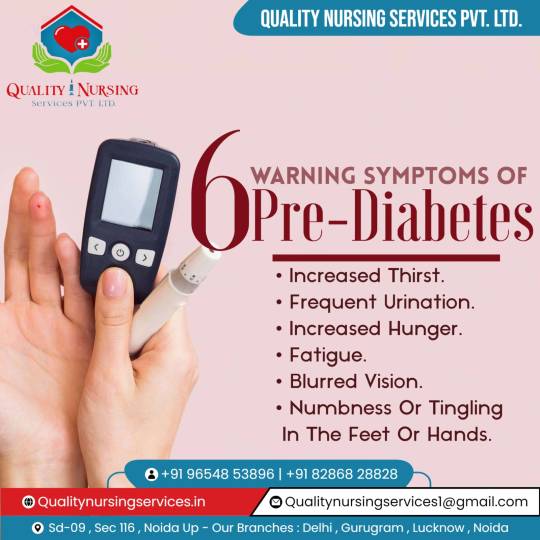
⚠️Don't ignore the signs! Knowing the warning symptoms of Pre-Diabetes is the first step towards taking control of your health. Stay informed, stay proactive!
Our contact -Mob no :- 828-6-828-828 Mail ID:[email protected] Web:- www.qualityelderhomes.com
#PreDiabetesAwareness#HealthIsWealth#24x7Care#QualityElderHome#SupportiveCare#Nursing#QualityNursingServices#CompassionateCare#PersonalizedSupport#PatientCare
0 notes
Video
youtube
The 10 Red Flags of Prediabetes – Catch Them Now or Pay Later! While prediabetes may not exhibit obvious symptoms, certain conditions can be associated with insulin resistance and elevated blood sugar levels. #prediabetes #PrediabetesAwareness #prediabetic #prediabeteshelp #prediabetessupport
0 notes
Photo
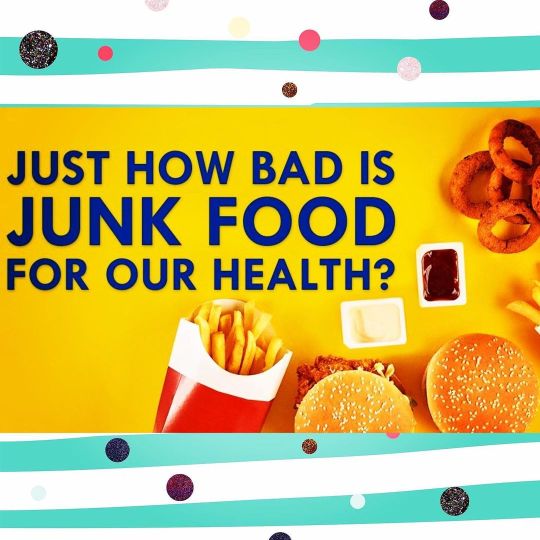
🔹Organo Vita Nutrition School 🔻FAST FOOD & YOUR DIGESTIVE AND CARDIOVASCULAR SYSTEM Most fast food, including drinks and sides, are loaded with carbohydrates with little to no fiber. When your digestive system breaks down these foods, the carbs are released as glucose (sugar) into your bloodstream. As a result, your blood sugar increases. Your pancreas responds to the surge in glucose by releasing insulin. Insulin transports sugar throughout your body to cells that need it for energy. As your body uses or stores the sugar, your blood sugar returns to normal. This blood sugar process is highly regulated by your body. As long as you’re healthy, your organs can usually handle these sugar spikes. But frequently eating high amounts of carbs can lead to repeated spikes in your blood sugar. Over time, these insulin spikes may cause your body’s normal insulin response to falter. This increases your risk of insulin resistance, type 2 diabetes, and weight gain. 🔵 www.organovitas.com —————————— #organovitas #lowcarbnutrition #mcallentx #foodeducation #organovitaschool #organovitafoodeducation #edinburgtx #weightlossjourney #diabetesawareness #personalnutrition #prediabeticdiet #prediabetesawareness #prediabetesreversal #ovitworks (at Organo Vita Weight Loss Center) https://www.instagram.com/p/CmZGWK5uXDi/?igshid=NGJjMDIxMWI=
#organovitas#lowcarbnutrition#mcallentx#foodeducation#organovitaschool#organovitafoodeducation#edinburgtx#weightlossjourney#diabetesawareness#personalnutrition#prediabeticdiet#prediabetesawareness#prediabetesreversal#ovitworks
0 notes
Photo
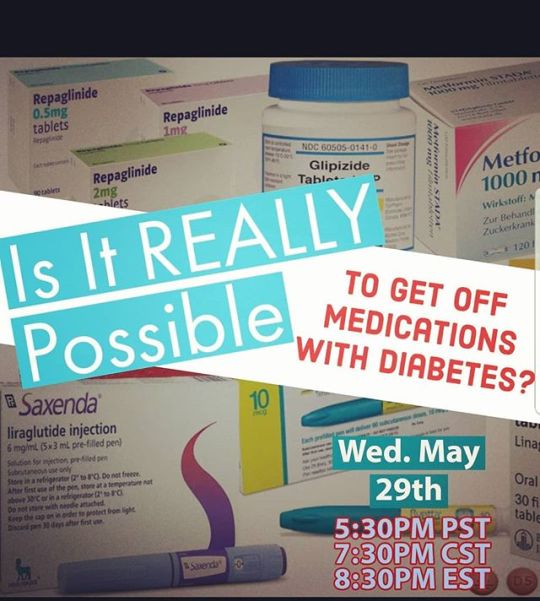
Is it really possible? I mean, really? Many people have this doubt, this fear and wonder if it really possible for them? We are going to talk about it.... Talking and discussing this topic openly and honestly...... .. in fact, we may even have a special guest.. Head over to http://bit.ly/2Ju1QHY to join us for this class!! See you tonight!!! #Healingwithfood #diabetes #diabetestype2 #nutritioncoaching, #intermittentfasting #diabeteslifestylecoachingacademy #diabetescommunity #diabetestipo2 #diabetessupport #diabeteseducation #diabeteseducator #prediabetesawareness #prediabetic #prédiabetes #prediabetescoach #prediabetesprevention #prediabetescommunity #prediabetessymptoms #defeatdiabetes — view on Instagram http://bit.ly/2WaVMLY
0 notes
Photo
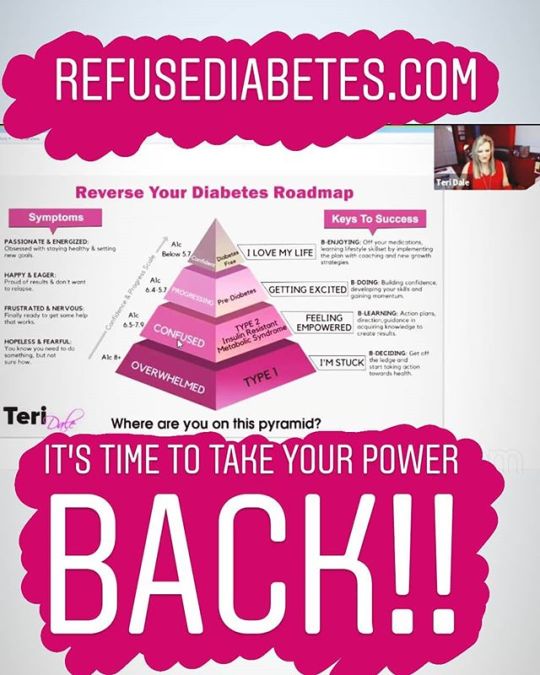
If you know anyone who is struggling with pre diabetes or diabetes, send them to www.Refuse diabetes.com for FREE information on how to help them get control of their health. We love sharing our holistic protocols and our 9 step process to help any woman with pre and type 2 diabetes to lose weight, get healthier and eliminate their need for medications. Proverbs 17:22: "A cheerful heart is good medicine, but a crushed spirit dries up the the bones." Our protocol also focuses on mindset health, which is a major ingredient in being able to reverse your diabetes and regain your health. #Healingwithfood #diabetes #diabetestype2 #nutritioncoaching, #intermittentfasting #diabeteslifestylecoachingacademy #diabetescommunity #diabetestipo2 #diabetessupport #diabeteseducation #diabeteseducator #prediabetesawareness #prediabetic #prédiabetes #prediabetescoach #prediabetesprevention #prediabetescommunity #prediabetessymptoms #defeatdiabetes #Healingwithfood #christianceo #womenoffaith #godlywoman #womanofgod #faith #christianwoman #christianfaith #faithbasedbusines #christianbusinessowner #christianwomeninbusiness — view on Instagram http://bit.ly/2HNSGDz
0 notes
Photo

Unfortunately this is true!! Let's change this!!! . Your body.knows how to heal itself, if you give it the resources to do so. Lifestyle modifications work way better most of the time (of course it depends how long you be been in meds and how much damage has been done,). But I've seen a lot of amazing things inside the Diabetes Lifestyle Coaching Academy!! Come and find out!! Refuse diabetes.com for a FREE downloadable copy of my book!! Yes, I said free!! #Healingwithfood #diabetes #diabetestype2 #nutritioncoaching, #intermittentfasting #diabeteslifestylecoachingacademy #diabetescommunity #diabetestipo2 #diabetessupport #diabeteseducation #diabeteseducator #prediabetesawareness #prediabetic #prédiabetes #prediabetescoach #prediabetesprevention #prediabetescommunity #prediabetessymptoms #defeatdiabetes — view on Instagram http://bit.ly/2JlvqjA
0 notes
Photo
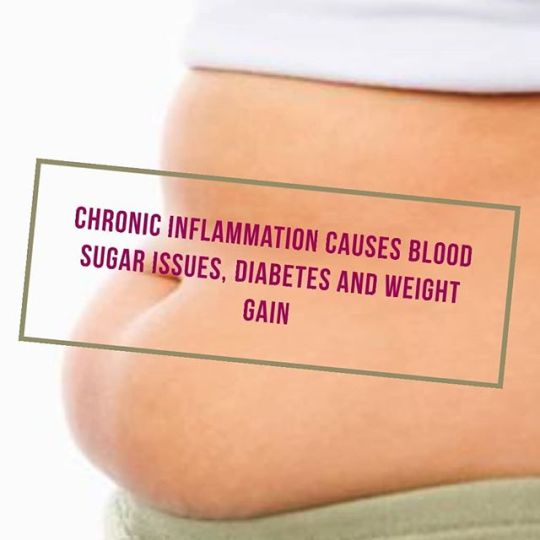
‼️Chronic inflammation is internal. When a person is exposed to high amounts of toxins over time (like environmental toxins, parasites, and bugs), these toxins settle in your tissues. 🔥An inflammatory process starts when chemicals are released by the damaged tissue. Most of the time, you can’t see or feel it. This low-grade, constant type of inflammation increases the risk of every leading cause of death. ‼️Chronic inflammation may be caused by infections that don't go away, abnormal immune reactions to normal tissues, or conditions such as obesity. 🔥http://bit.ly/2VkZKwp ❤️www.refusediabetes.com ❤️www.teridale.com #Healingwithfood #diabetes #diabetestype2 #nutritioncoaching, #intermittentfasting #diabeteslifestylecoachingacademy #diabetescommunity #diabetestipo2 #diabetessupport #diabeteseducation #diabeteseducator #prediabetesawareness #prediabetic #prédiabetes #prediabetescoach #prediabetesprevention #prediabetescommunity #prediabetessymptoms #defeatdiabetes #sidetracked #overrepresented — view on Instagram http://bit.ly/30ckhGN
0 notes
Photo
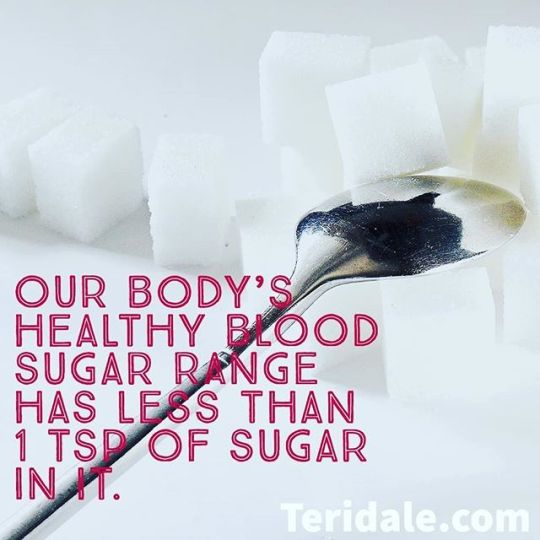
The body's blood sugar range is carefully controlled in a healthy individual, which will usually measure 80 mg/dl in the blood. So, how much actual sugar (or glucose) is in the body? The human body contains approximately 5 liters of blood. This amounts to 4 grams of sugar in the blood, which is less than a teaspoon of sugar! The American Diabetes Association draws the line between a healthy individual and someone being pre-diabetic at 100 mg/dl. This 100 mg/dl amounts to about 1 teaspoon. For someone to be diagnosed as diabetic, her fasting blood sugar is over 126 mg/dl. For this person, the amount of sugar in her body is about 1 ¼ teaspoons. This tells us that the amount of sugar is very carefully regulated: the difference between being healthy and being diagnosed as diabetic is a quarter of a teaspoon of sugar. www.refusediabetes.com www.teridale.com #Healingwithfood #diabetes #diabetestype2 #nutritioncoaching, #intermittentfasting ##christianceo #womenoffaith #godlywoman #womanofgod #faith #christianwoman #christianfaith #faithbasedbusines #christianbusinessowner #christianwomeninbusiness #diabeteslifestylecoachingacademy #diabetescommunity #diabetestipo2 #diabetessupport #diabeteseducation #diabeteseducator #prediabetesawareness #prediabetic #prédiabetes #prediabetescoach #prediabetesprevention #prediabetescommunity #prediabetessymptoms — view on Instagram http://bit.ly/2PZhAUi
0 notes